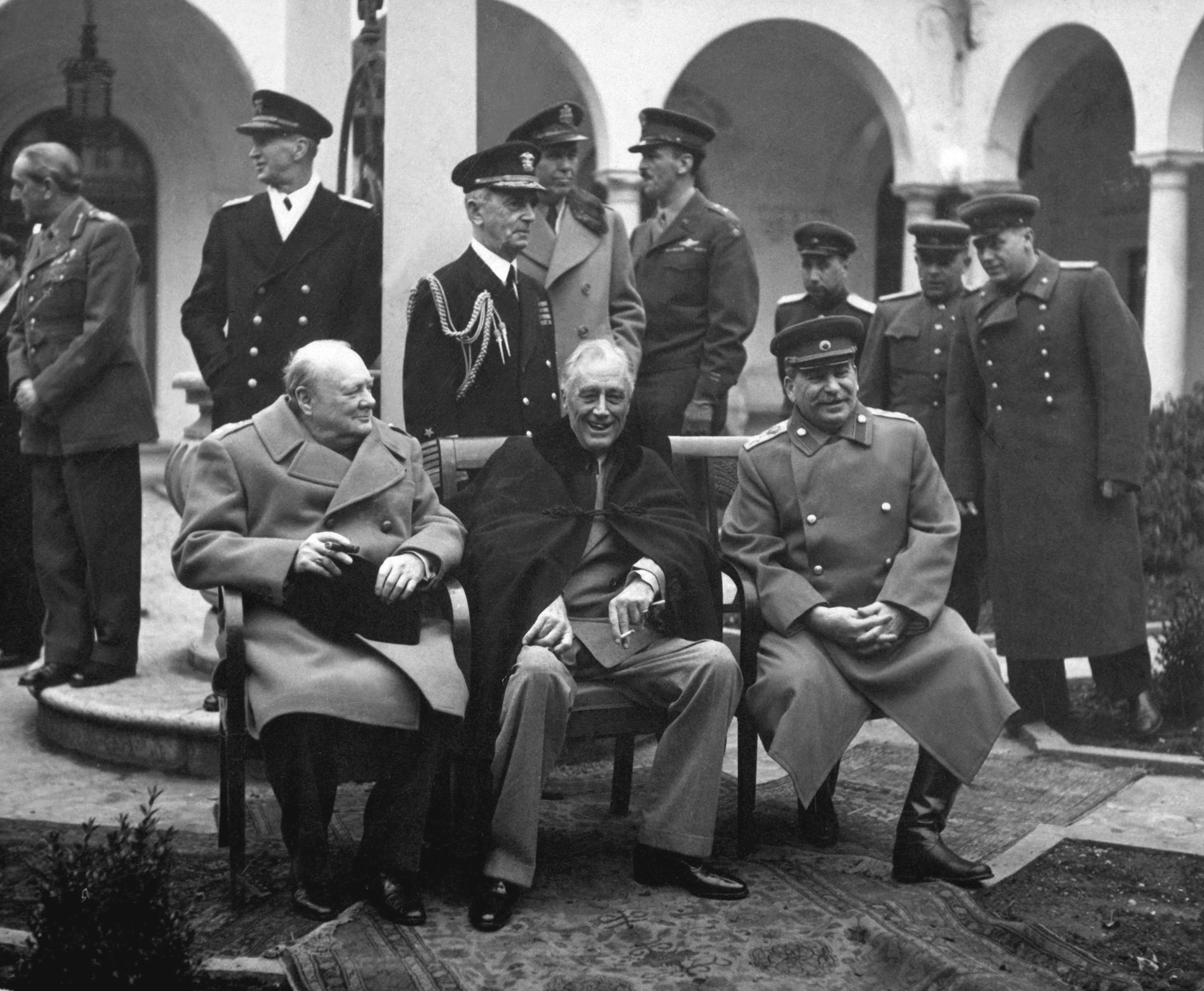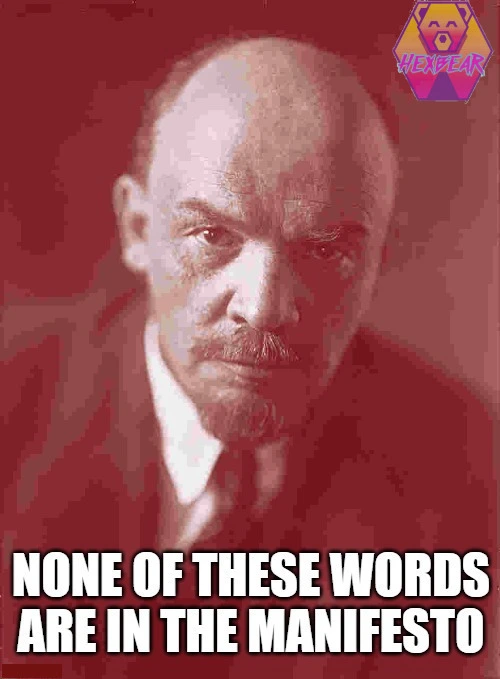I’ve been slowly learning more stuff about socialist history and the like, and I wanted to ask about the “Great Purge”. I only know kind of background things I’ve accumulated over the years, which are very likely warped and wrong given the whole propaganda machine and all that.
So yeah, any good sources to read more about it would be greatly appreciated, as well as potential critiques/justifications from a communist perspective. I know revolutionary violence is just part of taking and maintaining power, so I get that aspect. I do also see a lot of people got killed also, so imagine there’s a bit of debate either way on it.
Thanks for anything shared in advance!
Because in the western world it’s such a controversial topic, I’ve found that half the books that you’ll find discussing (from a socialist perspective) the Soviet Union even in a tangential manner, will show an opinion on this.
The book “Human rights in the Soviet Union” by Albert Szymanski does a good job of a material analysis explaining the reasons why states use oppression in Chapter 1, and Chapter 7 is dedicated to “Toleration and Repression in the USSR: 1917-54”. The numbers are a bit outdated because it’s written before the official numbers came out after Perestroika, but the analysis holds up IMO.
Michael Parenti in “Blackshirts and Reds” does a good job of an analysis in my opinion, showing that the overwhelming majority of Gulag inmates were in fact just petty criminals and not opposition as is most often implied, and puts a perspective on the social situation at the time. I’m guessing this is more the perspective of anarchist socialists, since the book heavily leans towards decentralisation without getting into the historical and material reasons why AES states don’t go further lengths in such efforts.
For a perspective on the economic situation of the USSR over all its history, I highly recommend “Farm to Factory: a reinterpretation of the Soviet industrial revolution” by Robert C. Allen. It’s a sometimes dry book that goes into high detail on the economy of the late Russian Empire, how it was affected by WW1, the revolution and the Russian Civil War, the details of the Dekulakization and the first 5-year-plans, WW2, and the economic trend until the 70s (economic miracle) and after the 70s (“stagnation” period). A good material analysis on the reasons for oppression can’t be done without an understanding of the economy of the country, the distribution and class of labour and the productive forces, etc. The importance and difficulties of a quick industrialisation for the survival of the USSR, which suffered the biggest land invasion of its history barely 10 years after coming out of a jumble made by World War 1, Russian Civil War and Dekulakization, cannot be overstated in my opinion. Also, the economic analysis shows that forced labor from Gulags wasn’t a significant source of labor for the country and industrialisation could have been carried out with or without it.
Albert Szymanski’s book “Is the red flag flying”, there’s a brief section (10 pages long-ish) on Stalin in Chapter 10, which starts with a sentence I think every Marxist-Leninist should tattoo on their arm: “It is peculiar that many Marxists who maintain a consistently material position when analysing the development of capitalist or pre-capitalist societies […] resort to explaining developments in the Soviet Union from the 1920s to the 1950s largely in terms of individual personalities - ‘Great Men’, personal motivations, power hunger, and so on. This is true of both apologists for Stalin and their arch opponents the Trotskyists”. You don’t have to like or agree with Szymanski’s view on Stalin and the purges, but he’s 100% right that a material analysis should be done, and history shouldn’t be explained in “big man” theories, which many resort to when talking about Stalin era.
Lastly, the Russian journalist Дудь (has a channel on YouTube called вДудь) made a 2h documentary from a non-socialist perspective talking with family members of victims and stuff like that, describing some of the harshest Gulags mainly in the Siberian region of Kolyma in the far north. It’s a bit of a lib piece (in the Russian sense of liberal), but I’m not against the idea and it’s much better than the slop you’ll find in the western world libs. It’s both subtitled and dubbed to English, BTW, if you want to find the video just look up “vdud Kolyma” (or вДудь Колыма) on YouTube or google, it’s called “Колыма - родина нашего страха / вДудь”.
Hope any of this helps
Thanks so much! I’ll try to slowly chip away at your recs.
Grover Furr collects resources on his espresso Stalinist blog
https://espressostalinist.com/the-real-stalin-series/party-purges/
There are a ton there but I’ll highlight several
The general criteria for the purging of party members were corruption, passivity, breaches of party discipline, alcoholism, criminality and anti-Semitism. For bourgeois individuals and kulaks who hid their class origin expulsion was certain. (But not for those who had been accepted into the party and who had admitted their class background.) For the former tsarist officers who hid their past were also inevitably expelled. All those who had been expelled could in their turn appeal to the Central control commission, and then their cases were reviewed at a higher level. Sousa, Mario. The Class Struggle During the Thirties in the Soviet Union, 2001.
It would be a mistake to regard the 1933 chistka as having been directed solely against members of the opposition. The largest single group expelled were “passive” party members: those carried on the roles but not participating in party work. Next came violators of party discipline, bureaucrats, corrupt officials, and those who had hidden past crimes. Members of dissident groups did not even figure in the final tallies. Stalin himself characterized the purge has a measure against bureaucratism, red tape, removed, and careerists, “to raise the level of organizational leadership.” The vast majority of those expelled were fresh recruits who had entered the party since 1929, rather than Old Bolshevik oppositionists. Nevertheless, the 1933 purge expelled about 18 percent of the party’s members and must be seen as a hard-line policy or signal from Moscow. Getty & Naumov, The Road to Terror. New Haven, Conn.: Yale Univ. Press, c1999, p. 127
The arrests affected chiefly the upper party circles and those officials dealing with foreigners; hence they seemed to foreigners more extensive than they were. None of the arrests was as wanton as the foreign press portrayed them; evidence of some sort was indicated. The common sentence was not execution, but swift removal to another job in another part of the country. Fairly large numbers of such transfers seemed to have occurred merely on suspicion, on the theory that if suspects were guilty, or had guilty connections, the transfer would break these up; if they were innocent they would not suffer much from a job transfer and would come back to Moscow eventually if they chose. Naturally such people did not hasten to communicate with their foreign acquaintances during their absence, and this often led the latter to assume that the Russians had been “liquidated.” A year or two later, large numbers of such people returned, none the worst for their temporary job in the “sticks.” Strong, Anna L. The Soviets Expected It. New York, New York: The Dial press, 1941, p. 137
Between November 1936 and March 1939, including 1937, when the ‘Great Purge’ was at its most intense, roughly 160,000 to 180,000 people left the CPSU (for any reason). This represented about 8% of total Party members, far fewer than those who were expelled in the purge of 1933. In 1937, at the height of the Great Purge in Moscow, 33,000 (13.4% of the total Moscow Oblast Party organization) left to the party; this compares with 133,000 in 1933 and 45,500 in 1935. Szymanski, Albert. Human Rights in the Soviet Union. London: Zed Books, 1984, p. 241
Also you can read specifically about the military purges prior to WW2
https://espressostalinist.com/the-real-stalin-series/military-purges/
Highly recommend reading The Origins of the Great Purges!
Really changed my understanding of what was even meant by ‘purge’.
Thanks! Will look into it.
I too would like to know more.
oh huh something I was reading a book about recently. In addition to everyone else’s excellent comments I wanna point to James Harris’ The Great Urals: Regionalism and the Evolution of the Soviet System because it completely upends the traditional scholarship of the purges.
Here is a libgen link to it: https://libgen.is/book/index.php?md5=E10CBD3C52CDF7D5D258AC666D67FAB6
I’m gonna copy the description from libgen to emphasize I’m not editorializing when i sing the book’s praises:
Political histories of the Soviet Union have portrayed a powerful Kremlin leadership whose will was passively implemented by regional Party officials and institutions. Drawing on his research in recently opened archives in Moscow and the Urals—a vast territory that is a vital center of the Russian mining and metallurgy industries—James R. Harris overturns this view. He argues here that the regions have for centuries had strong identities and interests and that they cumulatively exerted a significant influence on Soviet policy-making and on the evolution of the Soviet system.After tracing the development of local interests prior to the Revolution, Harris demonstrates that a desperate need for capital investment caused the Urals and other Soviet regions to press Moscow to increase the investment and production targets of the first five year plan. He provides conclusive evidence that local leaders established the pace for carrying out such radical policies as breakneck industrialization and the construction of forced labor camps. When the production targets could not be met, regional officials falsified data and blamed “saboteurs” for their shortfalls. Harris argues that such deception contributed to the personal and suspicious nature of Stalin’s rule and to the beginning of his onslaught on the Party apparatus.Most of the region’s communist leaders were executed during the Great Terror of 1936–38. In his conclusion, Harris measures the impact of their interests on the collapse of the communist system, and the fate of reform under Gorbachev and Yeltsin.
In very dry, academic writing, with constant, painstaking reference to the archival sources, Harris lays out facts building to his conclusion that there was a massive USSR wide conspiracy, and as the NKVD was sent in to uncover it the conspirators covered it up harder (including using the non-violent purges to purge non-corrupt officials, scientists, managers, workers). The conspirators systemically distorted production potential of their territory; repeatedly, in several different regions, leaders encouraged overestimation of the quantity of ore, and often the quality of ore deposits. Some of the copper and coal they claimed would be the basis of soviet industry literally couldn’t even be used for industrial production. Hundreds of millions of rubles were wasted on facilities, and the conspirators covered it up harder (for example, scientists who disagreed with inflated guesses were–purged by the clique!). This conspiracy wasn’t a Nazi plot, or a trotskyist plot, or an SR plot, or a tsarist plot–all of this was done to cover up regional authorities’ incompetence and corruption (which dated back to literally 1917).
This excerpt from the conclusion is a good summary of his conclusions:

I would only add that by “not permitted to cite “objective reasons” for economic problems” Harris means "they had lied so, so much over the last 15 years that when Stalin ordered for much lower, more reasonable (based on the numbers central had) quotas but demanded absolute fullfilment of them, the regional authorities still couldn’t meet quotas and explaining why would reveal their conspiracy.
Another highlight was the financial commisariat giving the gulags less than 10% of the money the centre ordered them to (it took years for the centre to find out, thousands died). Yet another highlight was the Ukrainian regional authorities (which ofc
 , death to him, was high up in) using central orders for dekulakization to eradicate any peasants they felt unruly (they made a profitable partnership with the ural factory managers who needed forced labour). Similarly, regional authorities used coercion in collectivization even in periods when the centre was repeatedly ordering them not to.
, death to him, was high up in) using central orders for dekulakization to eradicate any peasants they felt unruly (they made a profitable partnership with the ural factory managers who needed forced labour). Similarly, regional authorities used coercion in collectivization even in periods when the centre was repeatedly ordering them not to.Thanks for the info!
I recommend works by Zemskov, but I don’t know if they were translated into English.
I did a little bit of googling, and is this the work you were talking about? Or a different one?
It’s one of his earliest works, he wrote several books later (and evolved from right-wing liberal to left-wing almost-communist).






